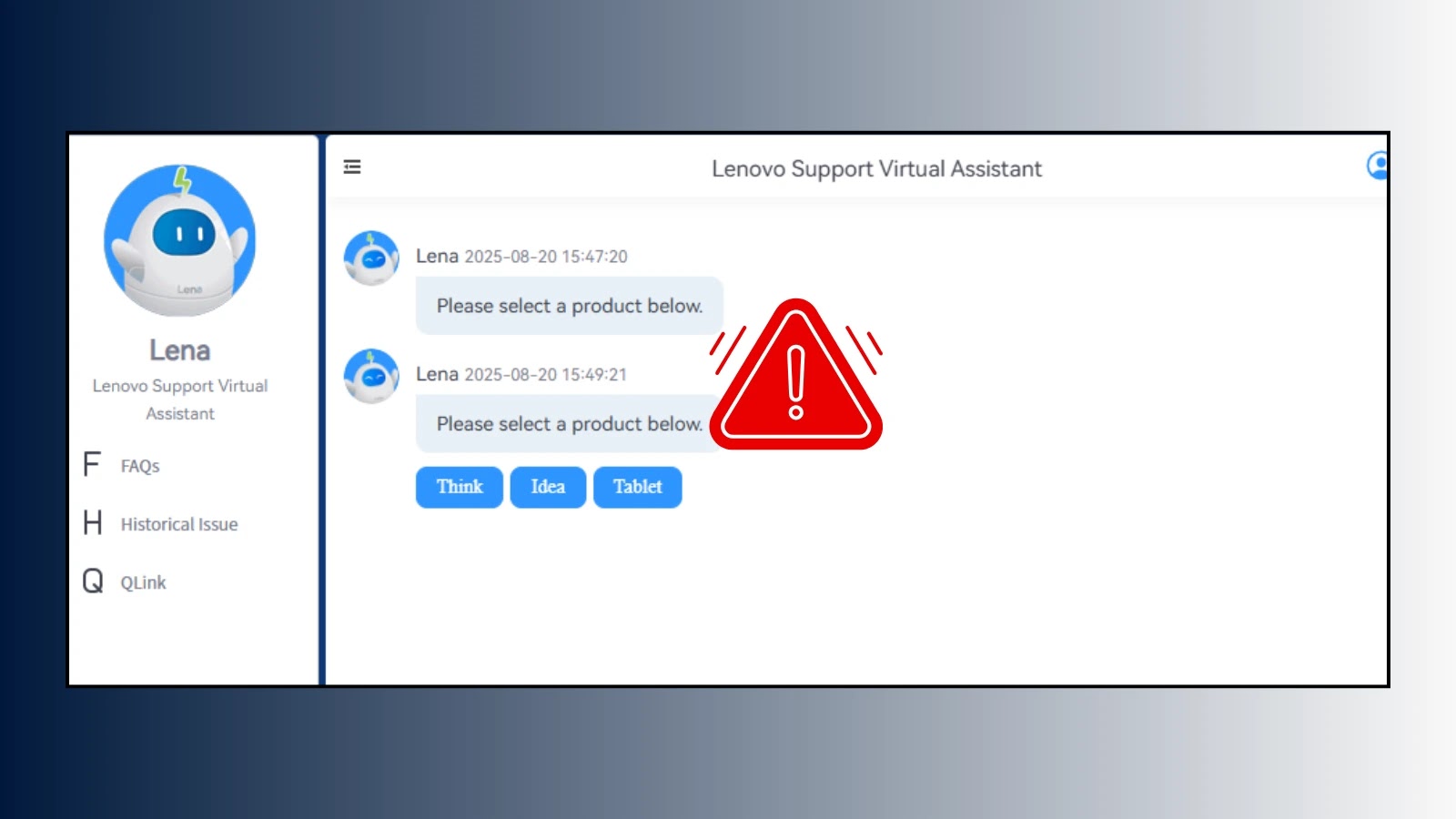
Lenovo AI Chatbot Vulnerability Let Attackers Run Remote Scripts on Corporate Machines
A disturbing revelation has shaken the cybersecurity landscape, underscoring the critical importance of secure AI implementation in corporate environments. A recent discovery has unveiled a significant vulnerability within Lenovo’s AI chatbot, “Lena,” allowing unauthorized remote script execution on corporate machines. This flaw isn’t just theoretical; it presents a direct pathway for attackers to compromise customer support systems and potentially gain access to sensitive enterprise data. For IT professionals, security analysts, and developers, understanding the intricacies of this vulnerability and implementing robust countermeasures is paramount.
The Critical Flaw: Cross-Site Scripting (XSS) in Lenovo’s AI Chatbot
Cybersecurity researchers identified a critical security flaw in Lenovo’s “Lena” AI chatbot. The core of this vulnerability lies in its susceptibility to Cross-Site Scripting (XSS) attacks. In essence, XSS allows an attacker to inject malicious client-side scripts into web pages viewed by other users. In the context of Lena, this means that simple prompt manipulation, rather than complex exploits, can lead to devastating consequences.
The danger here is profound. When an unvalidated input from a user (in this case, a malicious prompt) is rendered by the chatbot’s interface without proper sanitization, the injected script executes within the user’s browser. For corporate machines utilizing Lena for customer support or internal operations, this opens a direct conduit for attackers to run arbitrary code, potentially leading to data exfiltration, system compromise, or further network penetration.
Impact on Corporate Security and Data Integrity
The implications of this XSS vulnerability are far-reaching for any organization leveraging the “Lena” chatbot. The ability for attackers to execute remote scripts on corporate machines directly translates to:
- Unauthorized Data Access: Malicious scripts can be designed to steal session cookies, credentials, or other sensitive information displayed within or accessible from the compromised browser session.
- System Compromise: Remote script execution can trigger malicious downloads, redirect users to phishing sites, or even initiate further attacks against internal network resources.
- Customer Support System Exploitation: If customer support agents use Lena, their machines become direct targets, potentially exposing customer data processed through those systems.
- Reputational Damage: A successful breach stemming from this vulnerability can erode customer trust and significantly damage the affected company’s reputation.
While a specific CVE number for this vulnerability was not provided in the source, the description strongly aligns with critical XSS vulnerabilities, which are often classified under categories like CWE-79: Improper Neutralization of Input During Web Page Generation (‘Cross-site Scripting’).
Remediation Actions and Best Practices
Addressing an XSS vulnerability requires a multi-layered approach, focusing on input validation, output encoding, and continuous monitoring. For organizations using Lenovo’s “Lena” chatbot, immediate action is crucial:
- Update to the Latest Version: The most critical step is to apply any patches or updates released by Lenovo to specifically address this vulnerability. Ensure all instances of the “Lena” chatbot are running the latest, secure version.
- Input Validation: Implement stringent server-side input validation for all user-supplied data, regardless of its source. This means validating data type, length, format, and content. Reject or sanitize any input that doesn’t conform to expected patterns.
- Output Encoding: Ensure all data retrieved from a database or user input is properly encoded before being displayed in HTML, JavaScript, or CSS contexts. This prevents the browser from interpreting malicious scripts as executable code.
- Content Security Policy (CSP): Implement a robust CSP header to restrict the sources from which content can be loaded. This can significantly mitigate the impact of XSS by preventing the execution of scripts from unauthorized domains.
- Regular Security Audits: Conduct frequent security audits and penetration tests on all web applications and chatbots to identify and rectify vulnerabilities before they can be exploited.
- Least Privilege Principle: Ensure that corporate machines and user accounts operating the chatbot adhere to the principle of least privilege, limiting their access to sensitive resources.
- Employee Training: Educate employees, especially those using the chatbot in customer-facing roles, about the dangers of suspicious prompts and the importance of reporting unusual behavior.
Tools for Detection and Mitigation
Leveraging the right tools is essential for identifying and mitigating XSS vulnerabilities. While these tools assist, they do not replace the need for secure development practices and diligent patching.
| Tool Name | Purpose | Link |
|---|---|---|
| OWASP ZAP | Comprehensive web application security scanner for pen-testing and vulnerability discovery, including XSS. | https://www.zaproxy.org/ |
| Burp Suite | Industry-standard solution for web security testing, offering capabilities for XSS detection and exploitation. | https://portswigger.net/burp |
| Nessus | Vulnerability scanner that identifies various security weaknesses, including XSS, across a network. | https://www.tenable.com/products/nessus |
| HTML Purifier | PHP library that filters HTML against a white-list, preventing XSS and other attacks. | http://htmlpurifier.org/ |
Navigating the AI Security Landscape
The Lenovo AI chatbot vulnerability serves as a stark reminder of the security challenges inherent in deploying AI solutions. As organizations increasingly integrate AI into their operations, the attack surface expands. Developers and security teams must prioritize security-by-design principles from the ground up, diligently validating and sanitizing all inputs, and meticulously encoding all outputs. The future of secure AI depends on proactive vigilance and a commitment to robust security measures.





